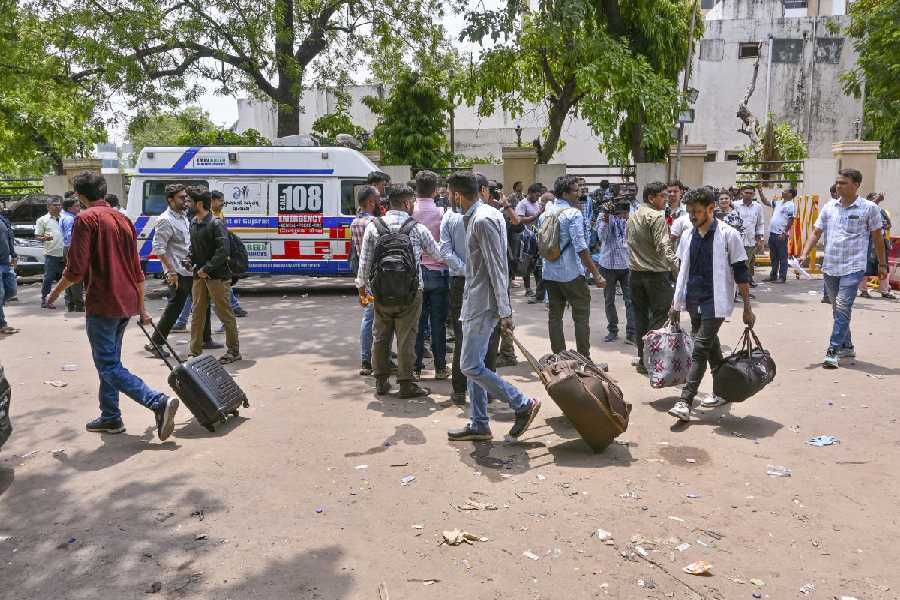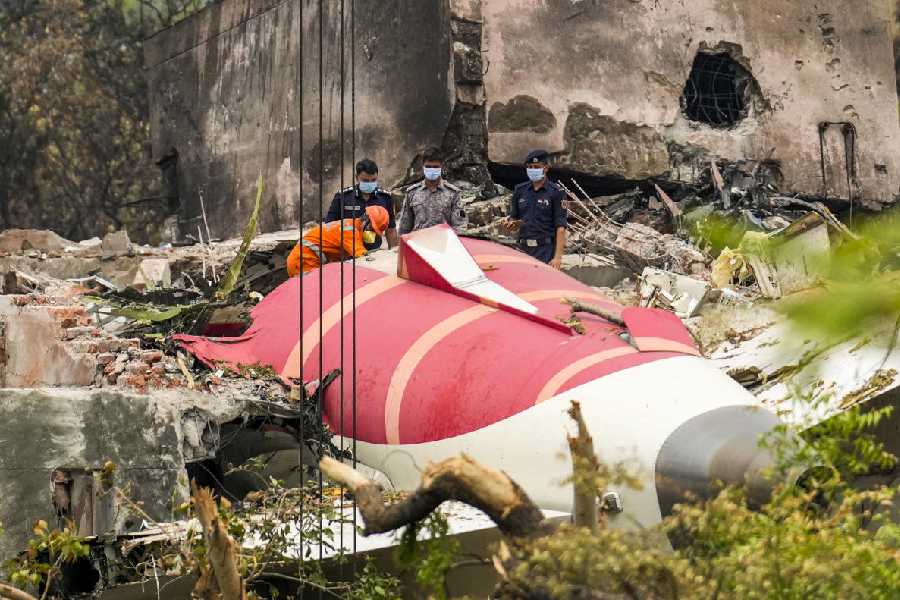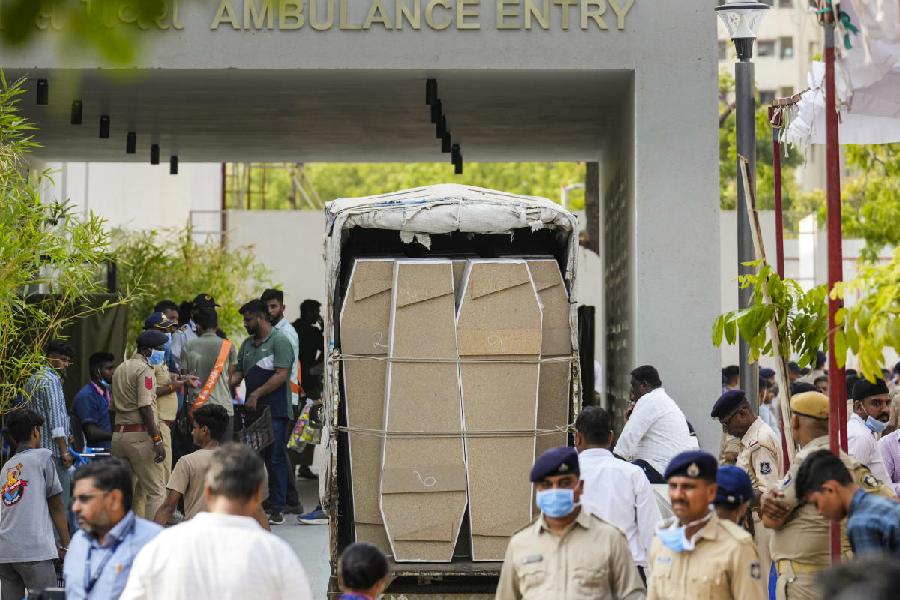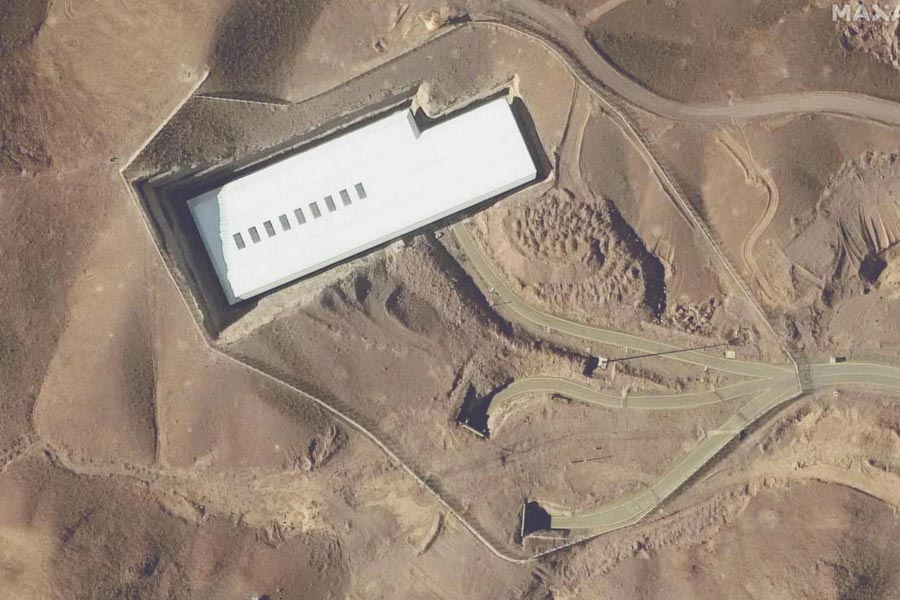 |
Tamluk, Aug. 28: The East Midnapore administration has blocked 10 culverts to prevent floodwater from moving towards the Kolaghat power plant, the knee-jerk reaction further inundating around 500 villages swamped in the past few days because of rain and an embankment breach.
The culverts along the Tamluk-Panskura state highway have been blocked with sandbags and tin sheets to prevent floodwater from flowing to the northern side, where the 1,260mW state-owned thermal power plant is located.
Kolaghat Thermal Power Project (KTPP) supplies electricity to the pool from where the state-run WBSEDCL and the CESC draw power.
The administration has set up a police camp near one of the culverts to stop people in the 500-odd affected villages on the southern side of the road from removing the barriers. The distance between the power plant and the nearest culvert is 8km.
The villages, spread across 300sqkm in the Tamluk and Panskura blocks, have around 2 lakh residents. The villages have been flooded since Friday night following a breach in the embankment of the Kangsabati, which is swollen with water released from the Kangsabati barrage in Birbhum’s Mukutmanipur.
The situation has worsened because of heavy rain in the past two days.
The district agriculture department has recorded rainfall of 97mm in Panskura from 8am on Tuesday to 8am on Wednesday.
“The flood situation has worsened because of the heavy rain. So we have blocked the mouths of 10 culverts to prevent the water from flowing towards the Kolaghat power plant,” said Anirban Bhattacharya, an executive engineer of the irrigation department in East Midnapore.
He said the flood-affected people had removed the barriers from some of the culverts since Monday.
Residents of Naikuri, Kurpai, Darja and neighbouring villages blocked NH41, which connects Kolaghat with Haldia, for an hour from 10am today, demanding that the barriers be removed.
A Darja resident said: “We are under water for the past three days. Now the administration has blocked the culverts, preventing the water from flowing to the other side of the road. As a result, the water level in our villages is rising. If the administration doesn’t remove the barriers, we will blow up the culverts with bombs.”
Kurpai resident Susanta Maity said the villagers had repeatedly urged the administration to remove the barriers from the culverts “but they did not listen”. “So we were compelled to block the highway.”
District police chief S.K. Jain said the police camp had been set up at Naikuri to prevent law-and-order problems.
“There were some law-and-order problems over blocking a culvert at Naikuri. So we have set up a police camp there. The police will maintain round-the-clock vigil on the state highway,” he said.
River expert Kalyan Rudra said water should have been allowed to flow through the culvert in the larger interest of flood-affected people.
“The water cannot be blocked as many people are suffering. The blocks should be removed from the culverts and water should be allowed to flow in the larger interest of the people. This should be done even if the plant has to be temporarily shut down,” Rudra said.
He added that the state must prepare a flood-management policy and create more outlets for drainage.
The general manager of the Kolaghat thermal power plant, Pulak Roy, said a canal beside the plant was full following rain.
“In the first week of September, a tidal surge is expected (which will increase the water in the canal) and there will be a severe drainage problem. If floodwater comes in this direction, there are chances that the water will enter the plant because of inadequate drainage,” Roy said.
If water enters the plant, it could make the coal damp and damage machines.
Power department officials, however, said there was no “real threat” yet to the plant because of the flooding.
“Given the low demand because of the cool weather, three to four of the six units are being operated. They are generating between 600mW and 800mW,” an official said.










